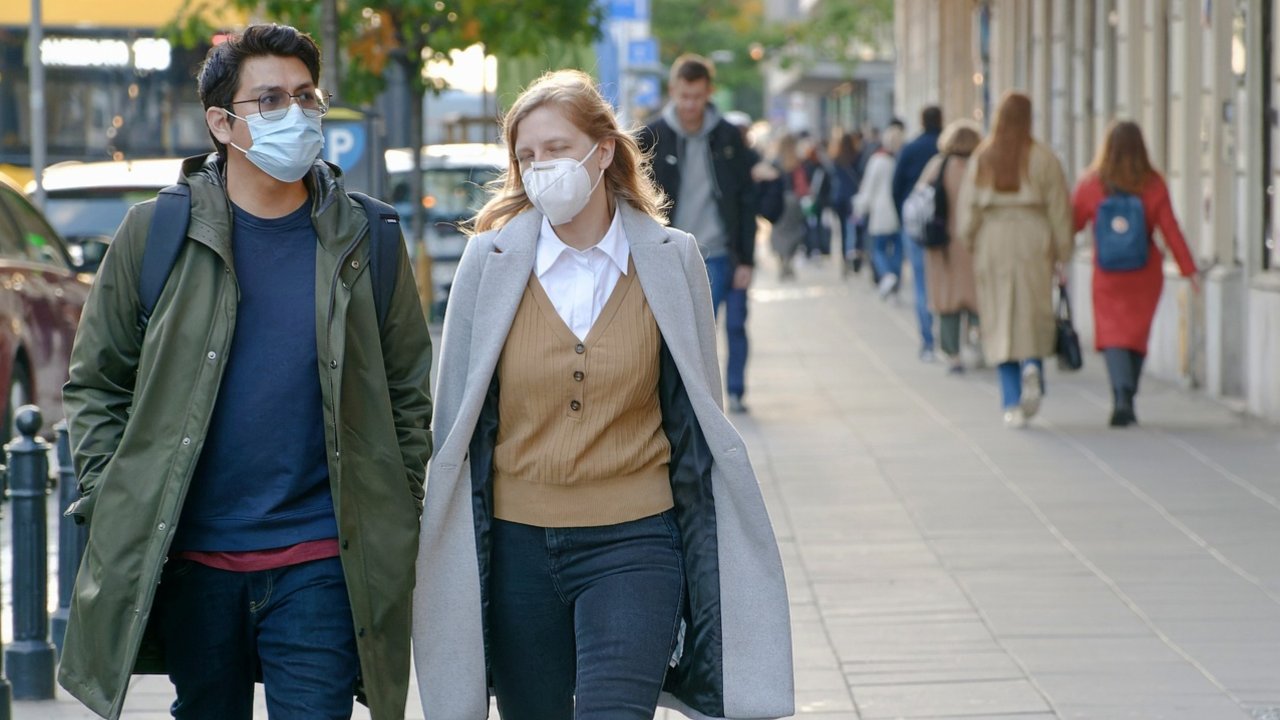COVID-19 Symptoms in 2024: What to Know
The COVID-19 pandemic has been a global health concern since it first emerged in late 2019. As we move through 2024, the landscape of COVID-19 continues to evolve, including the symptoms associated with the virus. Understanding the current symptoms is crucial for early detection and effective management of the disease. 
In this article, we’ll explore the latest COVID-19 symptoms, how they have changed over time, and what you need to know to stay informed and protected.
What Has Changed in COVID-19 Symptoms by 2024?
COVID-19 symptoms have shifted over the years as the virus has mutated and as more people have been vaccinated or developed immunity. In 2024, the virus’s evolution and the widespread use of vaccines have led to changes in how the disease presents itself. Some symptoms have become less common, while new ones have emerged. It’s essential to be aware of these changes to identify COVID-19 promptly and take appropriate action.
Common COVID-19 Symptoms in 2024
1. Respiratory Symptoms
Respiratory issues remain one of the most common symptoms of COVID-19. In 2024, people infected with the virus often experience a persistent cough, shortness of breath, and a sore throat. These symptoms may vary in severity, with some individuals experiencing mild discomfort while others struggle with more severe respiratory distress.
2. Fever and Chills
Fever remains a hallmark symptom of COVID-19, although the patterns may vary. Some people may experience high fevers, while others have mild, fluctuating temperatures. Chills often accompany fever and can be an early indicator of infection.
3. Fatigue and Body Aches
Fatigue is increasingly recognized as a prevalent symptom of COVID-19 in 2024. Many people report feeling unusually tired, even with mild cases of the virus. Body aches, similar to those experienced during the flu, are also common and can be quite debilitating.
4. Gastrointestinal Symptoms
Gastrointestinal issues, including nausea, vomiting, and diarrhea, have become more frequently reported in 2024. These symptoms may occur alongside more traditional respiratory symptoms or on their own, making COVID-19 detection more challenging.
Less Common Symptoms
1. Loss of Taste and Smell
The loss of taste and smell, once a defining symptom of COVID-19, has become less common in 2024. However, it still occurs in some cases, particularly with certain variants. This symptom can last for weeks or even months after the initial infection.
2. Skin Rashes and Discoloration
Skin rashes and discoloration are emerging as less common but notable symptoms in 2024. Some people develop rashes on their limbs or torso, while others may notice unusual discoloration in their fingers or toes, often referred to as “COVID toes.”
3. Neurological Symptoms
Neurological symptoms, such as headaches, confusion, and brain fog, are being reported more frequently in 2024. These symptoms can vary in intensity and may persist even after other symptoms have resolved, contributing to the ongoing discussion of Long COVID.
Severe Symptoms to Watch For
While many COVID-19 cases are mild, some symptoms indicate a more severe illness that requires immediate medical attention.
1. Difficulty Breathing
Persistent difficulty breathing or shortness of breath is a serious symptom that should not be ignored. If you or someone you know experiences this, seek medical help right away.
2. Persistent Chest Pain
Chest pain or pressure that doesn’t go away can be a sign of severe COVID-19 complications, including pneumonia or heart issues. This symptom necessitates prompt evaluation by a healthcare professional.
3. New Confusion or Inability to Wake
Sudden confusion, difficulty staying awake, or a lack of responsiveness are critical symptoms that require urgent medical intervention. These can be signs of severe neurological involvement or other life-threatening conditions.
COVID-19 Variants in 2024
In 2024, several COVID-19 variants continue to circulate globally. These variants may influence the symptoms you experience if you contract the virus. Some variants might lead to more severe symptoms, while others could result in a milder illness. It’s essential to stay informed about the dominant variants in your area and how they might affect the presentation of symptoms.
Comparing Symptoms of COVID-19 with Other Illnesses
Differentiating COVID-19 symptoms from those of other common illnesses like the flu, common cold, or allergies can be challenging.
1. COVID-19 vs. Flu Symptoms
Both COVID-19 and the flu can cause fever, body aches, and fatigue, but COVID-19 is more likely to result in a loss of taste and smell, as well as respiratory issues.
2. COVID-19 vs. Common Cold
The common cold typically causes milder symptoms, such as a runny nose and sneezing, which are less common in COVID-19 cases. However, mild COVID-19 can sometimes be mistaken for a cold.
3. COVID-19 vs. Allergies
Allergies often cause sneezing, itchy eyes, and a runny nose, which are not typical of COVID-19. However, overlap in symptoms can occur, especially with mild COVID-19.
When to Seek Medical Attention
If you’re experiencing COVID-19 symptoms, it’s crucial to monitor their severity. Mild symptoms can often be managed at home, but severe symptoms like difficulty breathing, chest pain, or confusion require immediate medical attention. Timely intervention can be life-saving, so don’t hesitate to seek help if you’re unsure about the severity of your symptoms.
Testing and Diagnosis in 2024
Advances in COVID-19 testing have made diagnosis faster and more accurate. In 2024, rapid tests are widely available and can provide results within minutes. Accurate diagnosis is essential for proper treatment and preventing the spread of the virus. If you suspect you have COVID-19, getting tested promptly is the best course of action.
How to Manage Mild Symptoms at Home
If your symptoms are mild, there are several steps you can take to manage them at home.
1. Rest and Hydration
Rest is crucial to recovery, as your body needs energy to fight the virus. Staying hydrated by drinking plenty of fluids is equally important, as fever and illness can lead to dehydration.
2. Over-the-Counter Medications
Over-the-counter medications can help alleviate symptoms like fever, body aches, and headaches. Be sure to follow the recommended dosage and consult with a healthcare provider if you’re taking other medications.
3. When to Isolate and For How Long
If you have COVID-19, it’s important to isolate to prevent spreading the virus to others. In 2024, isolation guidelines may vary depending on local regulations and the severity of your symptoms. Generally, you should isolate until you’re symptom-free and have tested negative for COVID-19.
Preventing the Spread of COVID-19 in 2024
Prevention remains a key strategy in combating COVID-19.
1. Continued Importance of Masking and Hand Hygiene
Even in 2024, wearing masks in crowded or enclosed spaces and practicing good hand hygiene are effective ways to prevent the spread of COVID-19.
2. Vaccination Updates
Staying up to date with COVID-19 vaccinations, including any boosters recommended for your age group or health condition, is crucial for protection against severe illness.
3. Social Distancing in Crowded Places
Avoiding close contact with others, especially in crowded settings, continues to be a practical measure to reduce the risk of contracting or spreading COVID-19.
Long COVID Symptoms in 2024
Long COVID, a condition where symptoms persist for months after the initial infection, continues to affect many people in 2024.
1. Understanding Long COVID
Long COVID can manifest in various ways, from ongoing fatigue and respiratory issues to neurological symptoms like brain fog.
2. Common Long COVID Symptoms
Common symptoms of Long COVID include persistent fatigue, shortness of breath, chest pain, and cognitive difficulties. These symptoms can significantly impact daily life and may require ongoing medical support.
3. Managing Long COVID
Managing Long COVID involves a combination of medical care, lifestyle adjustments, and support from healthcare providers. Rehabilitation programs, mental health support, and physical therapy may be necessary for those severely affected.
FAQs about COVID-19 Symptoms in 2024
What are the first signs of COVID-19 in 2024?
The first signs of COVID-19 in 2024 can include fever, cough, and fatigue. However, symptoms can vary widely from person to person.
Can COVID-19 symptoms vary from person to person?
Yes, COVID-19 symptoms can vary depending on factors like age, health status, and the specific variant of the virus.
How long do symptoms last?
COVID-19 symptoms can last anywhere from a few days to several weeks, depending on the severity of the illness and whether Long COVID develops.
Is it possible to be asymptomatic?
Yes, some people with COVID-19 may not exhibit any symptoms but can still spread the virus to others.
What should I do if I suspect I have COVID-19?
If you suspect you have COVID-19, get tested as soon as possible and follow local guidelines for isolation and treatment.
Conclusion
COVID-19 continues to be a dynamic and evolving health concern in 2024. Staying informed about the latest symptoms, testing options, and preventive measures is essential for protecting yourself and your loved ones. Whether you’re managing mild symptoms at home or seeking medical care for more severe issues, understanding what to expect can make all the difference.
Call to Action
It’s important to monitor your symptoms and seek care if needed. Staying up to date with the latest COVID-19 information and following public health guidelines will help keep you and your community safe.
References:






















